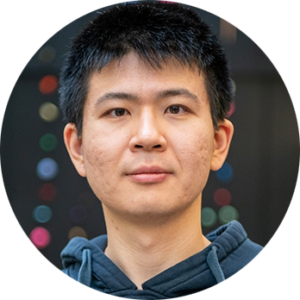Principal Investigators
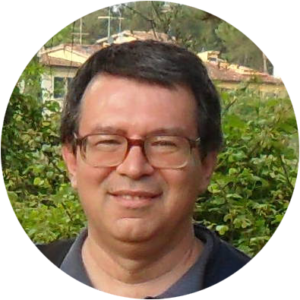
Igor Klebanov, Director
Igor Klebanov is an author of over 220 articles on subjects ranging from quantum field theory and particle physics, to string theory, cosmology and condensed matter physics. His early research was on the Skyrme model of baryons; it included the first paper on a Skyrmion crystal that may be relevant to very dense nuclear matter. Klebanov has done foundational research on the exact relations between quantum gauge theory and string theory. In particular, he helped formulate the widely used AdS/CFT dictionary that relates observables in a conformal field theory to properties of strings in the curved Anti-de Sitter space. He is also well-known for a series of papers on a curved 10D space-time that describes 4D gauge theory exhibiting the confinement of color. Currently, he is interested in a broad range of topics including 2D models for QCD.
Klebanov received his undergraduate degree at MIT in 1982 and his Ph.D. in Physics at Princeton University in 1986. After a three-year postdoctoral appointment at the Stanford Linear Accelerator Center, Klebanov returned to Princeton University as a faculty member. He is Eugene Higgins Professor of Physics and Director of the Princeton Center for Theoretical Science; during the 2021-22 academic year, he is also a Distinguished Visiting Professor at the Institute for Advanced Study in Princeton. Klebanov is a member of the U.S. National Academy of Sciences, and his honors include Princeton University Graduate Mentoring Award (2010) and Oskar Klein Medal (2022).
Selected papers:
- I.R. Klebanov, “Nuclear matter in the Skyrme model,” Nucl. Phys. B 262 (1985) 133.
- C.G. Callan and I.R. Klebanov, “Bound state approach to Strangeness in the Skyrme model,” Nucl. Phys. B 262 (1985) 365.
- S. Dalley and I.R. Klebanov, “String spectrum of (1+1) dimensional QCD coupled to adjoint matter,” Phys. Rev. D 47 (1993) 2517.
- I.R. Klebanov and M. Strassler, “Supergravity and a confining gauge theory: duality cascades and chiSB resolution of naked singularities,” JHEP 08 (2000) 052.
- R. Dempsey, I.R. Klebanov and S. Pufu, “Exact symmetries and threshold states in two-dimensional models for QCD,” JHEP 10 (2021) 096.

Ofer Aharony, Deputy Director
- O. Aharony, J. Sonnenschein, S. Yankielowicz, “A holographic model of deconfinement and chiral symmetry restoration”, Annals Phys. 322 (2007), 1420-1443, [hep-th/0604161]
- O. Aharony and E. Karzbrun, “On the effective action of confining strings”, JHEP 06 (2009), 012, [arXiv:0903.1927]
- O. Aharony and N. Klinghoffer, “Corrections to the Nambu-Goto energy levels from the effective string action”, JHEP 12 (2010), 058, [arXiv:1008.2648]
- O. Aharony and Z. Komargodski, “The effective theory of long strings”, JHEP 05 (2013), 118, [arXiv:1302.6257]
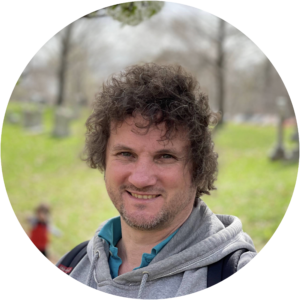
Sergei Dubovsky, Deputy Director
- Yang-Mills Glueballs as Closed Bosonic Strings, Sergei Dubovsky, Guzman Hernandez-Chifflet, JHEP 02 (2017) 022, [arXiv: 1611.09796]
- Towards a Theory of the QCD String, Sergei Dubovsky, Victor Gorbenko, JHEP 02 (2016) 022, [arXiv: 1511.01908]
- Evidence from Lattice Data for a New Particle on the Worldsheet of the QCD Flux Tube, Sergei Dubovsky, Raphael Flauger, Victor Gorbenko, Phys.Rev.Lett. 111 (2013) 6, 062006, [arXiv: 1301.2325]
- Effective String Theory Revisited, Sergei Dubovsky, Raphael Flauger, Victor Gorbenko, JHEP 09 (2012) 044, [arXiv: 1203.1054]

Michele Caselle
Michele Caselle is professor at the Torino University. He received his PhD in 1987 from the Torino University. His main research activities lie in the context of Lattice Gauge Theories (LGTs) and Effective String Models. He is currently working on developing new approaches to LGT simulations based on Machine Learning algorithms and on the study, with high precision Montecarlo simulations, of Effective String corrections in LGTs. As a side activity he is also interested in applications of Theoretical Physics to Molecular Biology.
Selected papers:
- Fine corrections in the effective string describing SU(2) Yang-Mills theory in three dimensions, F. Caristo, M. Caselle, N. Magnoli, A. Nada, M. Panero, A. Smecca, JHEP 03 (2022) 115 [arXiv:2109.06212]
- The unreasonable effectiveness of effective string theory: the case of the 3d SU (2) Higgs model, C. Bonati, M Caselle, S Morlacchi, Phys. Rev. D 104, 054501 (2021) [arXiv:2106.08784]
- Quantization of the effective string with TBA, M. Caselle, D. Fioravanti, F.Gliozzi, R. Tateo, JHEP 07 (2013) 071 [arXiv:1305.1278]
- String effects in the 3-d gauge Ising model, M.Caselle, M. Hasenbusch, M. Panero, JHEP 01 (2003) 057 [hep-lat/0211012]

Aleksey Cherman
Aleksey Cherman is an Assistant Professor at the University of Minnesota in Minneapolis. He obtained his PhD at the University of Maryland, College Park, and was a postdoc at the University of Cambridge, the University of Minnesota, and the Institute for Nuclear Theory at the University of Washington. His research is aimed at understanding various aspects of confining gauge theories in four spacetime dimensions, ranging from looking for ways to define confinement in theories with fundamental quarks, the behavior of QCD as a function of density, to exploring mechanisms of confinement and chiral symmetry breaking, and studying related questions in a variety of quantum field theories in lower dimensions.
Selected Papers:
- A. Cherman, M. Neuzil, T. Jacobson, “Universal deformations”, SciPost Phys. 12 (2022) 116 [arXiv:2111.00078]
- A. Cherman, T. Jacobson, S. Sen, L. G. Yaffe “Higgs-confinement phase transitions with fundamental matter”, Phys.Rev.D 101 (2020) 1, 014012 [arXiv:2007.08539]
- A. Cherman, M. Shifman, M. Unsal, “Bose-Fermi cancellations without supersymmetry”, Phys. Rev. D 99, 105001 (2019), [arXiv:1812.04642]
- A. Cherman, T. Schaefer, M. Unsal, “Chiral Lagrangian from duality and monopole operators in compactified QCD”, Phys. Rev. Lett. 117, 081601 (2016), [arXiv:1604.06108]
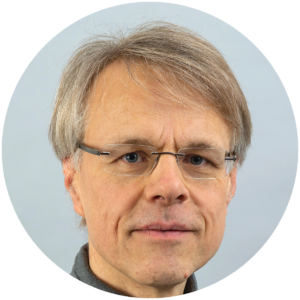
Matthias Gaberdiel
Matthias Gaberdiel obtained his PhD from Cambridge University under the supervision of Peter Goddard in 1995. After postdoctoral appointments at Harvard University and at Cambridge, he went as a Royal Society University Research Fellow to King’s College London. In 2003 he became professor for theoretical physics at ETH Zurich. He spent the fall terms in 2002 and 2010 as a member of the IAS in Princeton.
- M.R. Gaberdiel and R. Gopakumar, “Higher Spins & Strings,” JHEP 11 (2014), 044 [arXiv:1406.6103].
- L. Eberhardt, M.R. Gaberdiel and R. Gopakumar, “The Worldsheet Dual of the Symmetric Product CFT,” JHEP 04 (2019), 103, [arXiv:1812.01007 ].
- L. Eberhardt, M.R. Gaberdiel and R. Gopakumar, “Deriving the AdS_3/CFT_2 correspondence,” JHEP 02 (2020), 136 [arXiv:1911.00378].
- M.R. Gaberdiel and R. Gopakumar, “String Dual to Free N=4 Supersymmetric Yang-Mills Theory,” Phys. Rev. Lett. 127 (2021) no.13, 131601 [arXiv:2104.08263].
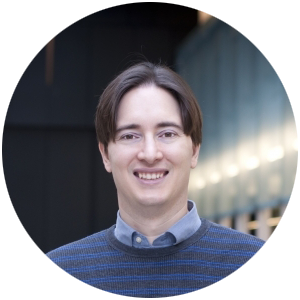
Davide Gaiotto
Davide Gaiotto holds the Krembil Galileo Galilei Chair in Theoretical Physics at the Perimeter Institute, and works on mathematical physics, quantum field theory, and string theory. Most recently, he has studied the mathematical properties and applications of supersymmetric or topological quantum field theories in various dimensions, of topologically twisted versions of holography and M-theory and of intergrability in two-dimensional quantum field theory.
Gaiotto graduated from the Scuola Normale Superiore in Pisa, Italy, and
obtained his Ph.D. at Princeton University in 2004. He held postdoctoral positions at Harvard University and the Institute for Advanced Study, Priceton, before moving to the Perimeter Institute in 2011. He has been awarded the Gribov Prize and the New Horizons in Physics Prize.
Selected Papers:
- D. Gaiotto, A. Kapustin, N. Seiberg, B. Willett, “Generalized Global Symmetries”, JHEP 02 (2015) 172, [arXiv:1412.5148]
- D. Gaiotto, A. Kapustin, Z. Komargodski, N. Seiberg, “Theta, Time Reversal, and Temperature”, JHEP 05 (2017) 091, [arXiv:1703.00501]
- D. Gaiotto, A. Kapustin, Z. Komargodski, N. Seiberg, “Time-reversal breaking in QCD_{4}4, walls, and dualities in 2 + 1 dimensions”, JHEP 01 (2018) 110, [arXiv:1708.06806]

Victor Gorbenko
Victor Gorbenko is an assistant professor at EPF Lausanne. Before joining EPFL he was a postdoc at Stanford university and IAS, Princeton. He uses the methods of Quantum Field Theory, broadly defined, to solve fundamental problems in particle physics, cosmology, and quantum gravity. One of the main topics of current interest is understanding confinement in gauge theories, in particular, by studying the worldsheet theory of confining flux tubes.
Selected papers:
- S. Dubovsky, R. Flauger, V. Gorbenko, “Effective string theory revisited”, JHEP 09 (2012) 044, [arXiv:1203.1054]
- S. Dubovsky, R. Flauger, V. Gorbenko, “Evidence for a new particle on the worldsheet of the QCD flux tube”, Phys.Rev.Lett. 111 (2013) 6, 062006, [arXiv:1301.2335]
- S. Dubovsky, V. Gorbenko, “Towards a theory of the QCD string”, JHEP 02 (2016) 022, [arXiv:1511.01908]
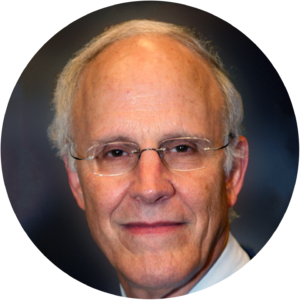
David Gross
David Gross is a Permanent Member of the Kavli Institute for Theoretical Physics (KITP) at the University of California, Santa Barbara. He has been a central figure in particle physics and string theory. In 1973, his discovery with Wilczek of asymptotic freedom led to the formulation of Quantum Chromodynamics, the theory of the strong nuclear force. Gross was awarded the 2004 Nobel Prize in Physics, with Politzer and Wilczek, for this discovery. He has also made seminal contributions to string theory.
After a PhD at the University of California, Berkeley, he was a Junior Fellow at Harvard University, before taking up a faculty position at Princeton University, and then moving to to KITP in 1997. In addition to the Nobel Prize, he has been awarded the Sakurai Prize, the MacArthur Fellowship, and the Dirac Medal, among others.
Selected Papers:
- D. Gross, F. Wilczek, “Ultraviolet Behavior of Non-Abelian Gauge Theories”, Phys.Rev.Lett. 30 (1973) 1343-1346
- D. Gross, A. Neveu, “Dynamical symmetry breaking in asymptotically free field theories”, Phys.Rev.D 10 (1974) 3235
- C. Callan, R. Dashen, D. Gross, “Towards a theory of the Strong Interactions”, Phys.Rev.D 17 (1978) 2717
- D. Gross, S. Coleman, “The price of asymptotic freedom”, Phys.Rev.Lett. 31 (1973) 851-854
- D. Gross, R. Pisarski, L. Yaffe, “QCD and Instantons at Finite Temperature”, Rev.Mod.Phys. 53 (1981) 43
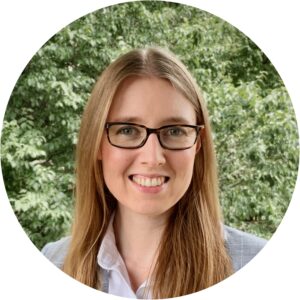
Phiala Shanahan
Selected Papers:
- P. E. Shanahan, M. Wagman and Y. Zhao, “Lattice QCD calculation of the Collins-Soper kernel from quasi-TMDPDFs,” Phys. Rev. D 104, no.11, 114502 (2021)
- G. Kanwar, M. S. Albergo, D. Boyda, K. Cranmer, D. C. Hackett, S. Racaniere, D. J. Rezende and P. E. Shanahan, “Equivariant flow-based sampling for lattice gauge theory,” Phys. Rev. Lett. 125, no.12, 121601 (2020)
- P. E. Shanahan and W. Detmold, “Pressure Distribution and Shear Forces inside the Proton,” Phys. Rev. Lett. 122, no. 7, 072003 (2019)
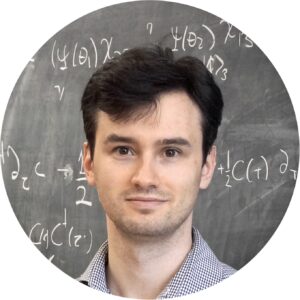
Grigory Tarnopolsky
Grigory Tarnopolsky is an assistant professor at Carnegie Mellon University. He obtained his Ph.D. at Princeton University, Princeton in 2017 and was a postdoctoral fellow at Harvard University. His research interests span a variety of problems in High Energy Physics and Condensed Matter Physics with the main focus on strongly coupled quantum field theories. His recent work also included formulation of the chiral model for Twisted Bilayer Graphene and its connection with fermion dynamics in non-abelian gauge field .
Selected Papers:
- D. G. Joshi, C. Li, G. Tarnopolsky, A. Georges, S. Sachdev “Deconfined critical point in a doped random quantum Heisenberg magnet”, Phys. Rev. X, (2020)
- S. Sachdev, H. D. Scammell, M. S. Scheurer, G. Tarnopolsky, “Gauge theory for the cuprates near optimal doping”, Phys. Rev. B 99, 054516, (2019)
- G. Tarnopolsky, A. J. Kruchkov, A. Vishwanath, “Origin of magic angles in Twisted Bilayer Graphene”, Phys. Rev. Lett. 122, 106405, (2019)
- S. Giombi, I. R. Klebanov and G. Tarnopolsky, “Conformal QEDd, F-Theorem and the ε Expansion”, J. Phys A49, 13, (2016).

Raju Venugopalan
- F. Gelis, E. Iancu, J. Jalilian-Marian and R. Venugopalan, “The Color Glass Condensate”, Ann. Rev. Nucl. Part. Sci. 60 (2010) 463
- J. Berges, M. Heller, A. Mazeliauskas and R. Venugopalan, “QCD Thermalization: Ab Initio approaches and interdisciplinary connections”, Rev. Mod. Phys., 93 (2021) 3, 035003
- E. Aschenauer, R. Venugopalan, et al.,”The Electron-Ion Collider: Assessing the energy dependence of key measurements”, Rept. Prog. Phys. 82 (2019) 2, 024301
Collaborators
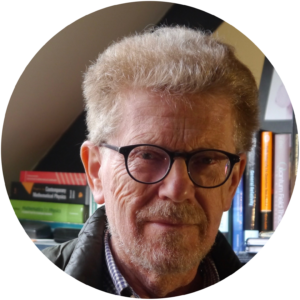
Michael Teper
Michael Teper is an Emeritus Fellow at All Souls College and a member of Theoretical Physics at the University of Oxford. His main interest is in calculating the non-perturbative physics of quantum field theories using lattice field theory techniques. Current work involves SU(N) gauge theories in 3+1 dimensions: the glueball spectrum, various string tensions, the topological charge of the fields, the spectrum of winding flux tubes and its implications for their effective string action.
- Andreas Athenodorou, Michael Teper: ‘SU(N) gauge theories in 3+1 dimensions: glueball spectrum, string tensions and topology’, JHEP 12 (2021) 082 [arXiv:2106.00364].
- Andreas Athenodorou, Michael Teper: ‘On the mass of the world-sheet ’axion’ in SU(N) gauge theories in 3+1 dimensions’, Phys.Lett.B 771 (2017) 408 [arXiv:1702.03717]
- Andreas Athenodorou, Barak Bringoltz, Michael Teper: ‘Closed flux tubes and their string description in D=3+1 SU(N) gauge theories’, JHEP 02 (2011) 030 [arXiv:1007.4720]
- Harvey B. Meyer, Michael J. Teper: ‘Glueball Regge trajectories and the pomeron: A Lattice study’, Phys.Lett.B 605 (2005) 344 [arXiv:hep-ph/0409183]
- Michael J. Teper: ‘SU(N) gauge theories in (2+1)-dimensions’ Phys.Rev.D 59 (1999) 014512 [arXiv:hep-lat/9804008]
Affiliated Investigators

Andreas Athenodorou
Andreas Athenodorou is an Associate Research Scientist at the Computation-based science and Technology Research Center (CaSToRC) at The Cyprus Institute. He obtained his PhD in 2011 from the University of Oxford under the supervision of Professor Michael Teper. Prior to his current position he worked as a Marie Skłodowská Curie Individual fellow at the University of Pisa, as a postdoctoral researcher at The Cyprus Institute, as a fixed term assistant professor at the University of Cyprus, as a postdoctoral researcher at the University of Cyprus, as a fixed term lecturer at the University of Cyprus, as a postdoctoral researcher at the University of Swansea and as postdoctoral researcher at DESY Zeuthen. His current research interests involve the study of the spectrum of the confining flux-tube and glueballs, the extraction of the Neutron-Electric Dipole Moment in Lattice QCD, the study of Strongly Coupled BSM theories on the Lattice, as well as applications of Machine Learning techniques on statistical physics and Lattice Gauge Theories.
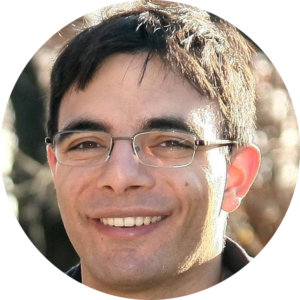
Silviu Pufu
Silviu Pufu is a Professor of Physics at Princeton University. He received his Ph.D. in Physics from Princeton University in 2011 and, prior to that, earned an A.B. in Physics, also from Princeton, in 2007. He was a Pappalardo Postdoctoral Fellow in Physics at the Massachusetts Institute of Technology (MIT) from 2011 to 2013. His research interests include various topics in quantum field theory, string theory, and gravity, such as conformal field theory, the gauge/gravity duality, string scattering amplitudes, confining gauge theories, and lattice gauge theory. He was the recipient of an Alfred P. Sloan Research Fellowship in 2017, and a PI of the Simons Collaboration for Nonperturbative Bootstrap between 2016 and 2023.
Post-Doctoral Fellows

Shi Chen
Shi Chen is a Postdoctoral Researcher Associate at University of Minnesota.

Gabriel Francisco Cuomo
Gabriel Francisco Cuomo is a Postdoctoral Research Associate at Princeton Univeristy and New York University.

Barack Gabai
Barack Gabai is a Postdoctoral Researcher Associate at École Polytechnique Fédérale de Lausanne.
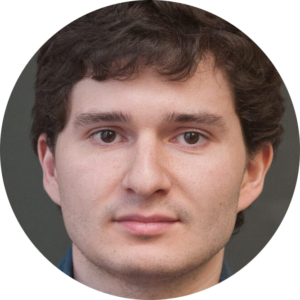
Bruno Scheihing Hitschfeld
Bruno Scheihing Hitschfeld is a Postdoctoral Researcher Associate at Massachusetts Institute of Technology.

Alexandre Homrich

Suman Kundu
Suman Kundu is a Postdoctoral Researcher Associate at Weizmann Institute of Science.
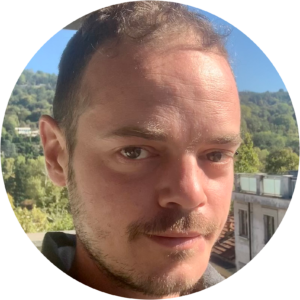
Stefano Negro
Stefano Negro is a Postdoctoral Research Associate at the Center for Cosmology and Particle Physics (CCPP) of the New York University. He obtained his Ph.D. in 2014 at the Università degli Studi di Torino under the supervision of Professor Roberto Tateo. Before joining the CCPP in 2020 he held postdoctoral positions at Durham University, École Normale Supérieure de Paris and Stony Brook University. His main research activities lie in the context of low dimensional Quantum Field Theories and Integrable Systems. Recently he has been working on a class of deformations that extend the definition of Quantum Field Theories beyond their accepted paradigm. These new theories are the perfect framework in which to address important open questions on the nature of non-perturbative physics and quantum gravity.
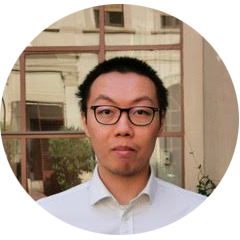
Jiaxin Qiao
Jiaxin Qiao is a postdoctoral researcher at École Polytechnique Fédérale de Lausanne (EPFL). He finished his Ph.D. at École Normale Supérieure – PSL (ENS-PSL) in 2022, under the supervision of Professor Slava Rychkov. Jiaxin’s main research interests focus on understanding strongly coupled quantum field theories. His work included Tauberian theorem and the distributional properties of conformal correlators. He is currently interested in studying the effective worldsheet theories of QCD strings.

Yuan Xin
Yuan Xin is a Postdoctoral Researcher Associate at Carnegie Mellon University.
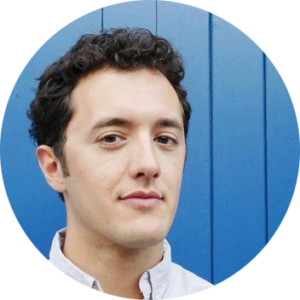
Bernardo Zan
Bernardo Zan is a Postdoctoral Research Associate at Princeton Univeristy. He obtained his Ph.D. at École Polytechnique Fédérale de Lausanne (EPFL) in 2019, under the supervision of Professor Slava Rychkov. He has worked on several topics concerning Conformal Field Theories, such as long range theories and complex CFTs. Recently, he’s been interested in studying lower dimensional gauge theories and statistical models in order to learn about higher dimensional theories.
